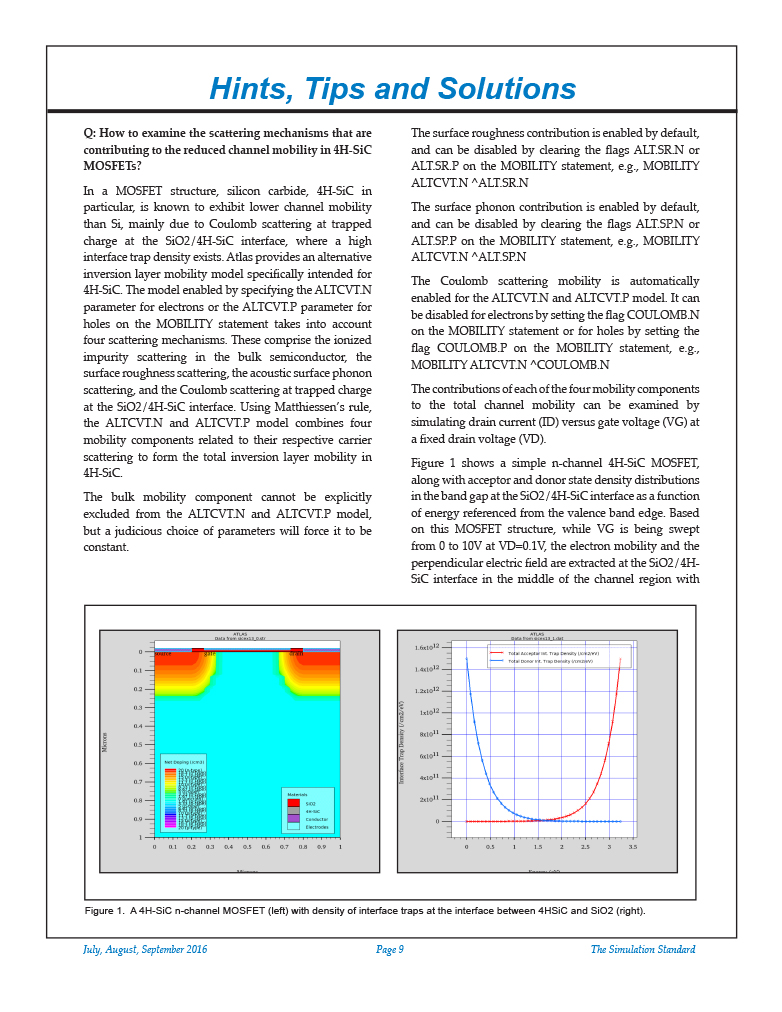Hints, Tips and Solutions
How to examine the scattering mechanisms that are contributing to the reduced channel mobility in 4H-SiC MOSFETs?
In a MOSFET structure, silicon carbide, 4H-SiC in particular, is known to exhibit lower channel mobility than Si, mainly due to Coulomb scattering at trapped charge at the SiO2/4H-SiC interface, where a high interface trap density exists. Atlas provides an alternative inversion layer mobility model specifically intended for 4H-SiC. The model enabled by specifying the ALTCVT.N parameter for electrons or the ALTCVT.P parameter for holes on the MOBILITY statement takes into account four scattering mechanisms. These comprise the ionized impurity scattering in the bulk semiconductor, the surface roughness scattering, the acoustic surface phonon scattering, and the Coulomb scattering at trapped charge at the SiO2/4H-SiC interface. Using Matthiessen’s rule, the ALTCVT.N and ALTCVT.P model combines four mobility components related to their respective carrier scattering to form the total inversion layer mobility in 4H-SiC.
The bulk mobility component cannot be explicitly excluded from the ALTCVT.N and ALTCVT.P model, but a judicious choice of parameters will force it to be constant.



